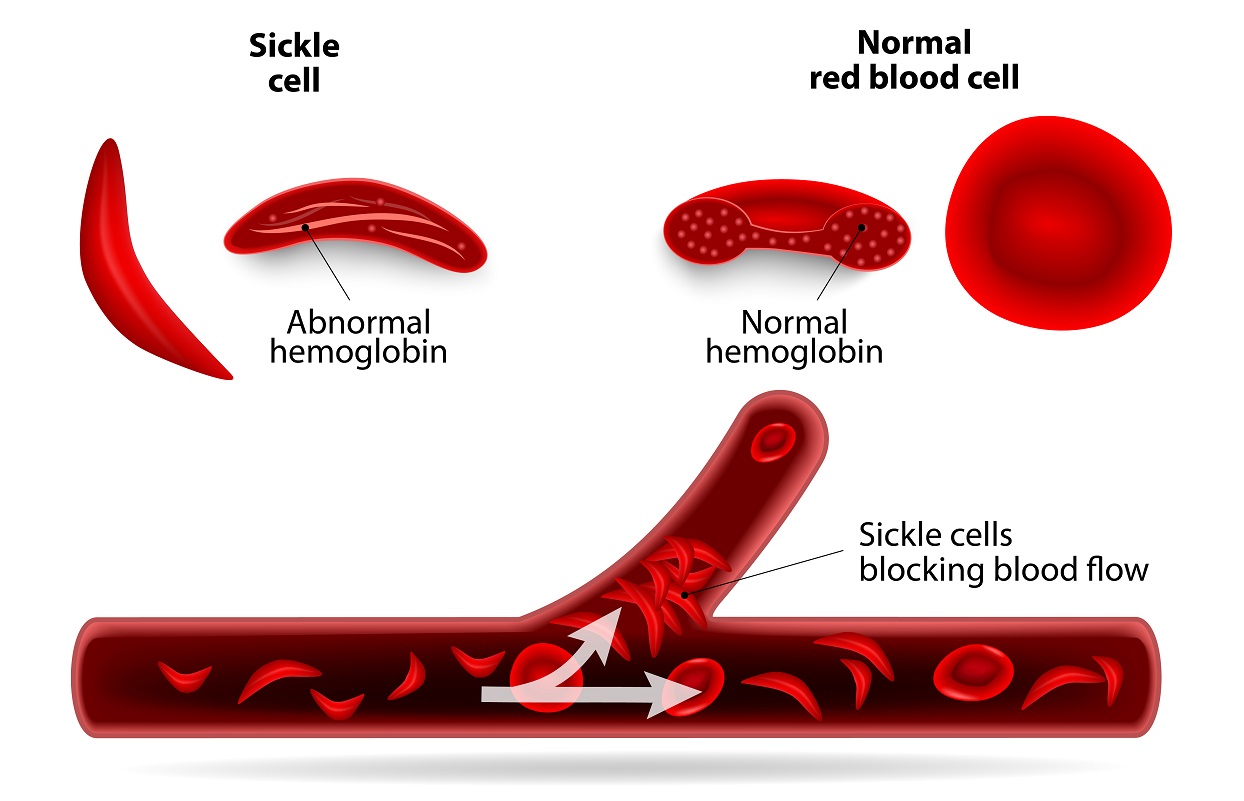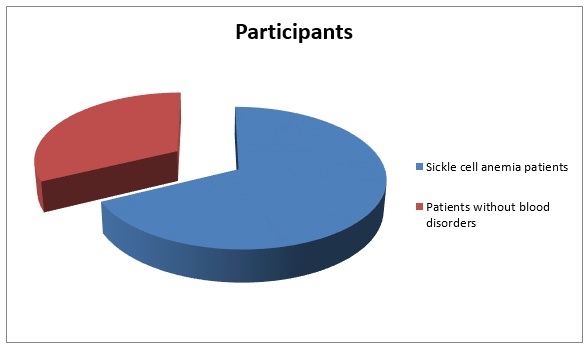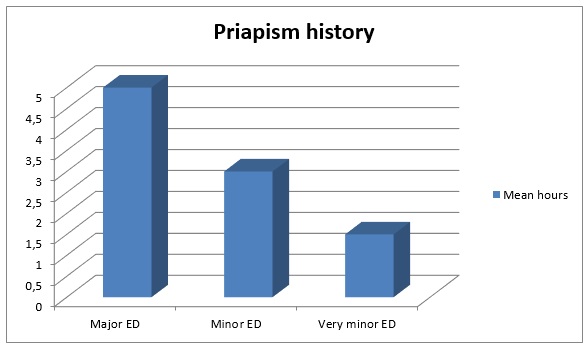How Tightly Are They Connected?
» What do you know about the sickle cell disease? The condition is called said to be pretty common in males from different world locations. According to statistics, nearly 35% of males with the diagnosis suffer from other conditions as well (more serious or minor). Erectile dysfunction and priapism are only two of them, yet they are the toughest to be cured. To know how sickle cell anemia works on erections, you are to know the mechanism of the illness itself.
 Types of Anemia
Types of Anemia
Beta Thalassemia
It affects mainly production of beta globin gene. The red blood cells’ size is reduced as not much protein is made. The symptoms of the condition are never too severe.
SS
This is the commonest type. It is usually inherited: the gene is copied from parents. The type is referred as the severest and is accompanied by serious symptoms and signs.
SC
It is the condition that takes place when a person inherits the Hb S gene from one parent and the Hb C one from the other. The symptoms are the same as in the case with SS, yet they are never that severe.
Beta-zero Thalassemia
The symptoms resemble those in the case of the SS type, yet they are even worse. It is too difficult to diagnose the condition at an early stage.
Not all people inherit these genes. However, in most cases, their own genes mutate with age and it is possible to develop sickle cell disease as an adult.
Symptoms and Signs of Sickle Cell Disease in Males
The core symptoms can’t be seen without specific medical analyses: red blood cells change their forms and start blocking the blood flow that should circulate through body tissues. Eventually, the damaged tissue starts suffering from the lack of oxygen. After a while, the condition results in the damage of body organs and severe disability.
How can one diagnose anemia at home judging by visible symptoms?
The list of main signs usually includes:
- Leg ulcers.
- Fatigue.
- Bacterial infections.
- Bone infarcts.
- Aseptic necrosis.
- Dactylitis.
- Heartache.
- Breathing problems.
- Pain crises.
- Liver congestion.
- Eye damage.
Though there may be many more signs that occur depending mainly on the age of a patient, these symptoms appear regardless of age.
Treating Sickle Cell Anemia
As the treatment course aims at limiting the number of crises, it is usually concentrated focused on managing and controlling the symptoms of illness. Males suffering from anemia need the ongoing treatment course, even though they don’t have the crisis yet. Folic acid supplements are the number one choice as they help the body to continue making new red cells that are healthy.
However, these supplements are not enough and the full course includes:
- Drinking much fluid.
- Blood transfusions (regular or when needed to prevent strokes).
- Pain medications.
- Hydrea to limit the chest pain as well as breathing problems due to the lungs damage.
- Pills to reduce the quantity of iron.
- Antibiotics to succeed in preventing the development of bacterial infections.
When the organs are too damaged and the therapy doesn’t work, a physician may go a different way and suggest counseling for a range of psychological complications, kidney transplant, dialysis, removal of the gallbladder, eye problems surgeries, hip replacement (cases of avascular necrosis), wound care when leg ulcers appear, etc. As for narcotic pain meds, they are used only when pills and injections can’t cope with the severest pain.
Vaccination helps in lowering risks of various infections:
- PCV – Pneumococcal conjugate.
- Hib – Haemophilus influenzae.
- PPV – Pneumococcal polysaccharide.
» The condition may be successfully cured if stem cell or bone marrow transplants are used. Nevertheless, these options are turned to in rare cases: it is too hard to find well-matched donors.
General Penis Issues Caused by Anemia
- Erectile dysfunction: this is the commonest consequence. Why? The penis depends on the supply of blood that is rich in oxygen. It ensures proper functioning. When the oxygen level is low, it dampens the tumescence degree.
- Stamina: for most males, it’s a real surprise, but sickle cell anemia affects stamina as well. The lack of oxygen affects how long the prime conditions remain along with the overall body energy and the ability to perform during intercourse.
- General penis health: when the tissues lack oxygen, the general health of the penis is affected as well.
Post sickle cell impotence is becoming the problem for many Mediterranean lands (in 20% of post anemia patients), India (in 25%), East Africa (in 30%), Middle East (in 23), the USA (21%), South America (22%) and Canada (19%).

Males with Sickle Cell Anemia Are Likely to Develop ED
When there’s a blood disorder in a male’s body, he will suffer from erectile dysfunction as well. In this case, the ED is referred as the result of instances of priapism. According to the researches that were conducted by the Johns Hopkins University, priapism is the erection type that lasts for hours and is accompanied by pain and discomfort. However, it is not the result of sexual stimulation. The blood is trapped within the tissues of the penile area and it can’t flow out. This medical condition is rather dangerous and often leads to the tissue damage and dysfunction if not treated within 24 hours after the occurrence.
A male with anemia experiences priapism that always results in impotence. The scientists from Johns Hopkins University decided to learn the effects of priapism both in males with anemia and those, who don’t suffer from any blood disorder.

By means of the International Index of ED, they tested 59 patients. There were two groups, nineteen and forty males in each. The mean age is 28.2 (40 males), and 32.6 (19 males). Forty males had anemia and other nineteen didn’t suffer from any blood condition. Both groups, however, suffered from priapism. They had to answer questions concerning their priapism history: major (more than 5 hours), minor (2-5 hours), very minor (less than 2 hours).

The onset of the ED in males without sickle cell diseases started ten years later than in males with the disorder. Around 31% of participants were diagnosed with impotence and the rates for males with anemia were 2 times higher. The results showed that males with anemia are more likely to develop impotence compared to other men.
Treatment Measures for ED Caused by Sickle Cell Anemia
To prevent risks and ensure high-quality and fast treatment, it is important to identify the problem of priapism or ED at early stages. Long-term episodes and complications are well-prevented and cured when a male is educated on the symptoms, signs and the need for their relief.
There are several techniques and approaches that are used in medical circles. They differ by the duration of use and offered effects. What works for one case may be useless for other events; this is why only an expert can decide which one will work for you.
Traditional approach
It includes several steps: the study of the penile blood gas, phenylephrine injections, and corporeal aspiration. They assist in smoothing muscle contractions. Most males notice quick results after high doses of intracavernosal phenylephrine. Some patients find relief after hyperbaric oxygen, blood or exchange transfusions, and hydration.
Surgery
It is the choice when a traditional approach brings no results. The procedure is called a penile shunt surgery that involves anastamosing corpora cavernosa along with corpus spongiosum and creating an internal fistula.
PDE5 inhibitors
They are helpful when it comes to the reduction of priapism episodes in patients with sickle cell disease. Medications like Viagra, Cialis, Levitra or Kamagra work aborting the attacks and are reported as the ones that soon lead to pretty positive results. However, the changes are referred as positive, yet short-term ones. Sometimes, their use may trigger the worsening of the priapic cases. The use of erectile dysfunction drugs during acute attacks leads to the cavernosal tissue vasodilatation, thus allowing the sickle cell egress.
Vacuum devices
A male may turn to a vacuum device along with intracavernosal injections. The results tend to be acceptable, yet it takes much time to find a well-fitting tool.
Oxygen desaturation
It often adds to the onset of the most painful crises. Some patients do benefit from the prophylactic treatment choice that includes the use of continuous positive airway pressure machines or nocturnal oxygen.
Hormones
It is said to decrease the risks or consequences of erectile dysfunction and priapism in males after sickle cell disease. The therapy includes the use of antiandrogen, stilbestrol and GnRH analogs. This kind of treatment course is often accompanied by gynecomastia and hot flashes.
The latest studies proved that such hormonal therapies may have both positive and negative effects. The latter ones may be rather significant and even dangerous: loss of libido, infertility, etc. Young patients are not recommended to choose a hormonal therapy to deal with ED provoked by anemia.
Prosthesis
The use of prosthesis is justified when the damage of tissues is irreversible: a prolonged and untreated priapism results in necrosis of smooth muscles, penile shortening, and fibrosis. In this case, the erectile function will not recover and implantation helps both to get back to sexual life and avoid major complications. This is one of the optimal ways to restore sexual function depending on the needs and preferences of a patient. The procedure is accompanied by several risks. A patient should discuss them all with a physician before choosing implantation.
A-adrenergic agonists
They may be used orally or via an intracavernous delivery. Physicians often suggest their long-term use. Among various options, Digoxin is believed to show effects by the inhibition NA/K ATPase pump that allows preventing the cavernosal smooth muscle relaxation. These agents are often prescribed to spinal cord patients when it is needed to moderate the reflex pathways that are involved in erections.
Possible agents used are GABA receptor, a synthetic analogue of GABA, Baclofen, and an inhibitory neurotransmitter.
Before a permanent damage takes place, a male is to address his physician. When the condition is left neglected or a patient is too shy to contact a specialist within 24 hours, he will surely suffer from intracavernosal fibrosis.

